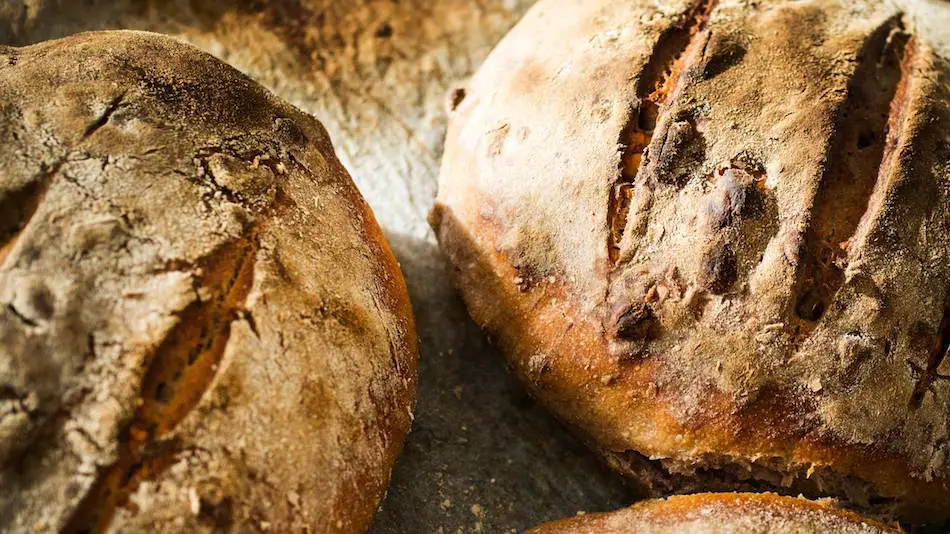
If you’ve made sourdough bread before, you may have encountered the problem of a hard and dense loaf. This can be frustrating and can cause you to wonder what went wrong. In this blog post, we will explore the potential reasons why your sourdough bread might have come out hard, as well as provide solutions and ways to avoid this problem in the future.
There are a few possible reasons why your sourdough bread might be hard. One possibility is that you didn’t let the dough rise long enough before baking it. This can cause the bread to be dense and hard. Another possibility is that you used too much flour when making the dough, which can also lead to a hard bread. Additionally, if you didn’t properly knead the dough, it can cause the bread to be tough and hard. Finally, it’s possible that your sourdough starter is not active enough, which can result in a hard bread.
1. You didn’t let the dough rise long enough before baking
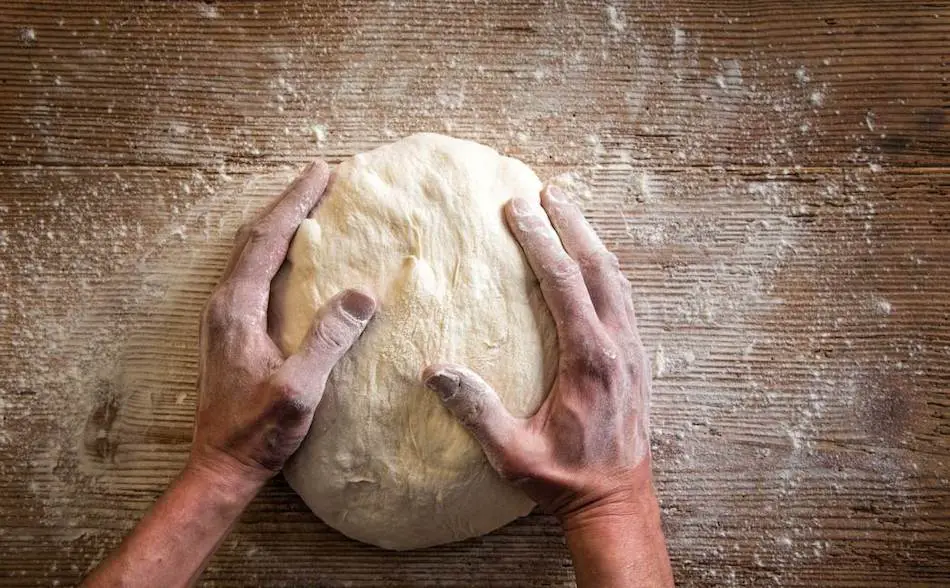
If you don’t let the dough rise long enough before baking, it can cause the bread to be dense and hard. This is because the yeast in the dough needs time to produce carbon dioxide gas, which helps to leaven the bread and give it a light and airy texture.
If the dough is not allowed to rise long enough, there will not be enough carbon dioxide gas produced, and the bread will be dense and heavy. Additionally, not letting the dough rise long enough can result in a bread that does not have a well-developed flavor. Overall, it is important to let the dough rise for the appropriate amount of time to ensure that the bread turns out well.
How long does it take for dough to rise? The exact amount of time it takes for the dough to rise will vary depending on a number of factors, such as the temperature of the dough and the activity of the sourdough starter. In general, though, you can expect the dough to take anywhere from several hours to a full day to rise properly.
It’s important to note that the rising time can vary greatly depending on the specific recipe and the type of flour you are using, so it’s important to follow the instructions in your recipe carefully and to check the dough regularly to see if it has risen enough. Additionally, you can use the “poke test” to determine if the dough is ready to be baked. To do this, simply press your finger into the dough; if the indentation remains, the dough is ready to be baked.
Solutions:
- Allowing the dough to rise properly helps to produce a light and airy bread with a well-developed flavor.
- The dough needs time to produce carbon dioxide gas, which helps it to rise and gives the bread its structure.
- If the dough is not allowed to rise long enough, it will be dense and heavy and may not have a good flavor.
- The rising time can vary depending on factors such as the recipe, the type of flour, and the temperature of the dough.
- In general, you can expect the dough to take several hours to a full day to rise properly.
- Follow the instructions in your recipe carefully and check the dough regularly to ensure that it has risen enough.
- You can use the “poke test” to determine if the dough is ready to be baked; if the indentation remains, the dough is ready.
2. You used too much flour when making the dough

If you use too much flour when making the dough, it can cause the bread to be hard and dense. This is because too much flour can lead to a dough that is too dry, which can make it difficult for the yeast to produce carbon dioxide gas and leaven the bread. As a result, the bread will be heavy and dense, and it may not have a well-developed flavor.
Also, using too much flour can make the dough difficult to work with and can result in a bread that is tough and chewy. To avoid this problem, it’s important to measure the flour carefully and to use the amount specified in the recipe. Additionally, you should be careful not to add too much flour when kneading the dough, as this can cause it to become too dry.
Solutions:
- Be careful not to add too much flour when kneading the dough.
- Measure the flour carefully and use the amount specified in the recipe.
- Avoid adding extra flour to the dough if it seems too sticky; instead, use a dough scraper or wet your hands to handle the dough.
- Check the dough regularly during the rising process, and if it seems too dry, add a small amount of water to moisten it.
- Pay attention to the texture of the dough and aim for a soft and pliable consistency.
- Use a kitchen scale to measure the flour if possible, as this can help ensure accuracy.
- Remember that the type of flour you use can affect the amount needed, so adjust the amount accordingly if you are using a different flour than the recipe calls for.
3. You didn’t properly knead the dough
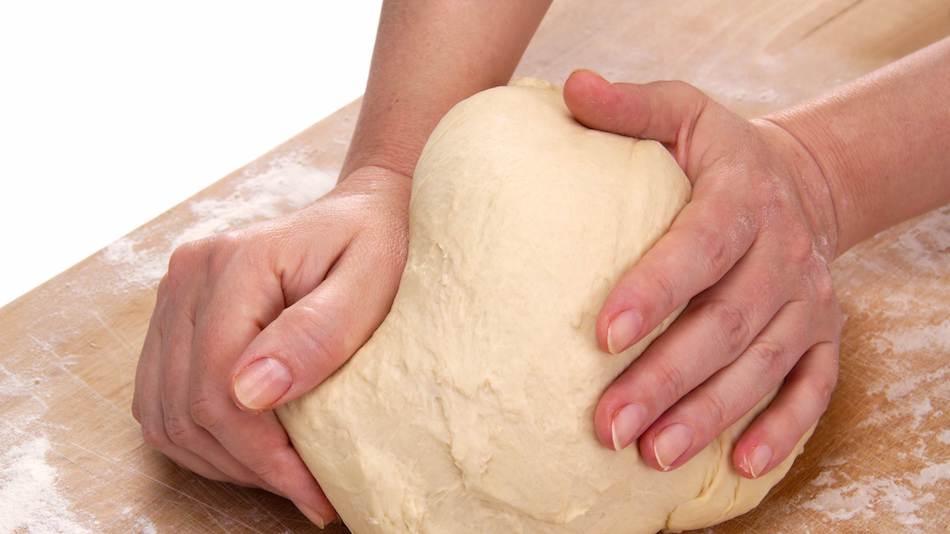
Properly kneading the dough is important for several reasons. First, kneading the dough helps to develop the gluten in the flour, which gives the bread its structure and allows it to rise properly. If the dough is not kneaded enough, it can be difficult for the yeast to produce carbon dioxide gas and leaven the bread, which can result in a dense and heavy loaf.
Additionally, kneading the dough helps to evenly distribute the ingredients and ensures that the bread has a consistent texture. Finally, kneading the dough helps to make it more pliable and easier to work with, which can make the bread-making process more enjoyable and successful. Overall, proper kneading is an essential step in making sourdough bread, and it should not be skipped or rushed.
Solutions:
- Proper kneading ensures that the yeast can produce enough carbon dioxide gas to leaven the bread.
- Kneading the dough helps to develop the gluten in the flour, which gives the bread its structure and allows it to rise properly.
- Kneading the dough helps to evenly distribute the ingredients and ensures that the bread has a consistent texture.
- Proper kneading makes the dough more pliable and easier to work with, which can make the bread-making process more enjoyable and successful.
- Skipping or rushing the kneading process can result in a dense and heavy loaf, so it is important to take the time to properly knead the dough.
- To knead the dough properly, use a gentle but firm motion and knead the dough for the amount of time specified in the recipe.
4. Your sourdough starter was not active enough
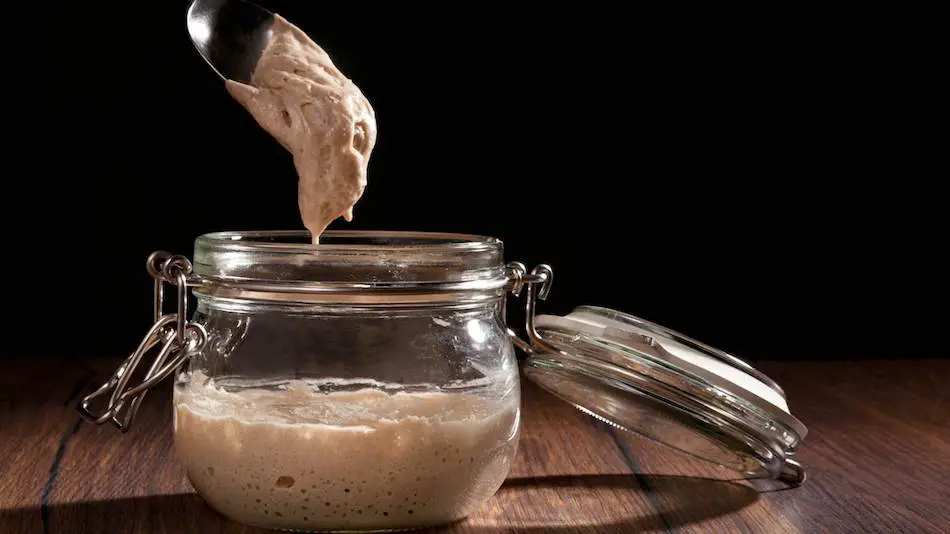
If the sourdough starter was not active enough when making the dough, it can cause the bread to be hard and dense. This is because the sourdough starter is what gives sourdough bread its distinctive flavor and texture, and it also helps to leaven the bread and make it light and airy.
If the starter is not active enough, it will not be able to produce enough carbon dioxide gas to leaven the bread properly, which can result in a dense and heavy loaf. Additionally, the bread may not have a well-developed flavor if the starter is not active enough.
To avoid this problem, it’s important to make sure that your sourdough starter is active and healthy before using it in your dough. You can do this by regularly feeding the starter and making sure that it is bubbly and has a pleasant, yeasty aroma.
Solutions:
- The sourdough starter is essential for giving the bread its distinctive flavor and texture, and it also helps to leaven the bread.
- If the starter is not active enough, the bread will be dense and heavy and may not have a good flavor.
- To ensure that your starter is active and healthy, feed it regularly and make sure that it is bubbly and has a pleasant, yeasty aroma.
- If your starter is not active, you can try to revive it by feeding it more frequently and making sure that it is kept at the proper temperature.
- If your starter still does not become active, you may need to start a new one.
- It’s a good idea to test your starter before using it to make sure that it is active and ready to use.
5. You baked the bread for too long or at too high of a temperature
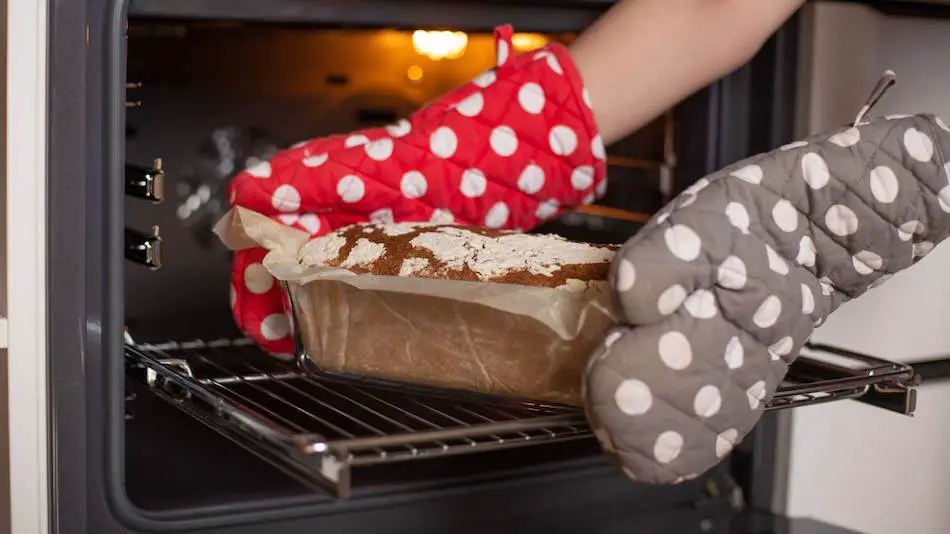
If you bake the sourdough bread for too long or at too high of a temperature, it can cause the bread to be hard and dry. This is because the high heat can cause the moisture in the dough to evaporate too quickly, which can result in a bread that is dry and tough. Additionally, if the bread is baked for too long, the crust can become overly hard and difficult to slice or chew.
To avoid this problem, it’s important to follow the instructions in your recipe carefully and to use an oven thermometer to ensure that the oven is at the correct temperature. Additionally, you should check the bread regularly during baking to make sure that it is not overbaked. If the bread seems to be browning too quickly, you can tent it with aluminum foil to protect it from the heat.
Solutions:
- Baking the bread for too long or at too high of a temperature can cause it to be dry and hard.
- The high heat can cause the moisture in the dough to evaporate too quickly, resulting in a dry and tough bread.
- Overbaking can also cause the crust to become overly hard and difficult to slice or chew.
- To avoid this problem, follow the instructions in the recipe carefully and use an oven thermometer to ensure that the oven is at the correct temperature.
- Check the bread regularly during baking to make sure that it is not overbaked.
- If the bread seems to be browning too quickly, tent it with aluminum foil to protect it from the heat.
6. You didn’t allow the bread to cool completely before slicing it
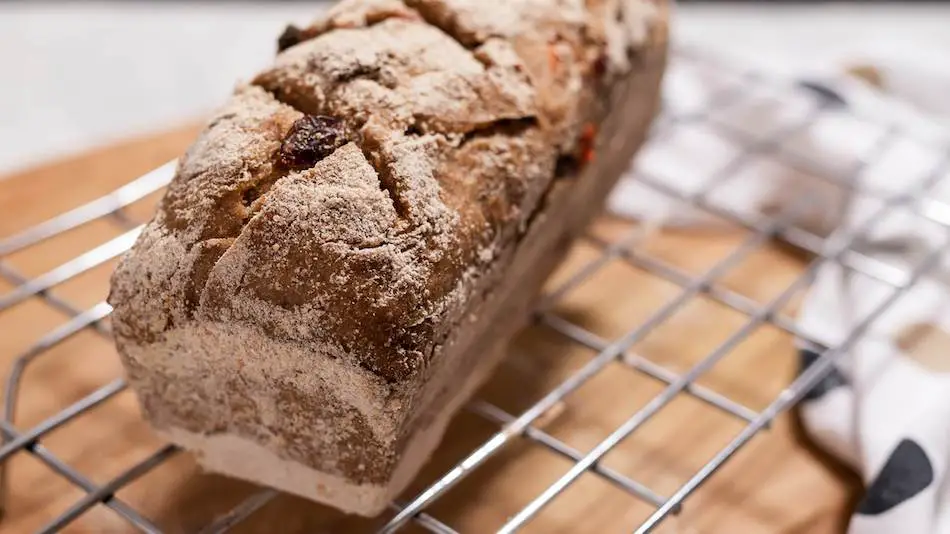
If you don’t allow the sourdough bread to cool completely before slicing it, it can cause the bread to be gummy and difficult to slice. This is because the bread needs time to cool and fully set before it can be sliced, and if it is sliced while it is still warm, the crumb (the inside of the bread) can be gummy and sticky.
Also, slicing the bread while it is still warm can cause it to become misshapen or squashed, which can affect its appearance and texture. To avoid this problem, it’s important to let the bread cool completely before slicing it. This can take several hours, so it’s best to be patient and let the bread cool completely before slicing it. This will ensure that the bread has a good texture and is easy to slice.
Solutions:
- Slicing the bread while it is still warm can cause it to be gummy and difficult to slice.
- The bread needs time to cool and fully set before it can be sliced, so it’s important to be patient and let it cool completely.
- Slicing the bread while it is still warm can also cause it to become misshapen or squashed.
- To avoid these problems, let the bread cool completely before slicing it. This can take several hours, so plan ahead and allow enough time for the bread to cool completely.
- Once the bread is completely cool, it will be easier to slice and will have a better texture.
7. You didn’t use enough water when making the dough, which can cause it to be dry and hard
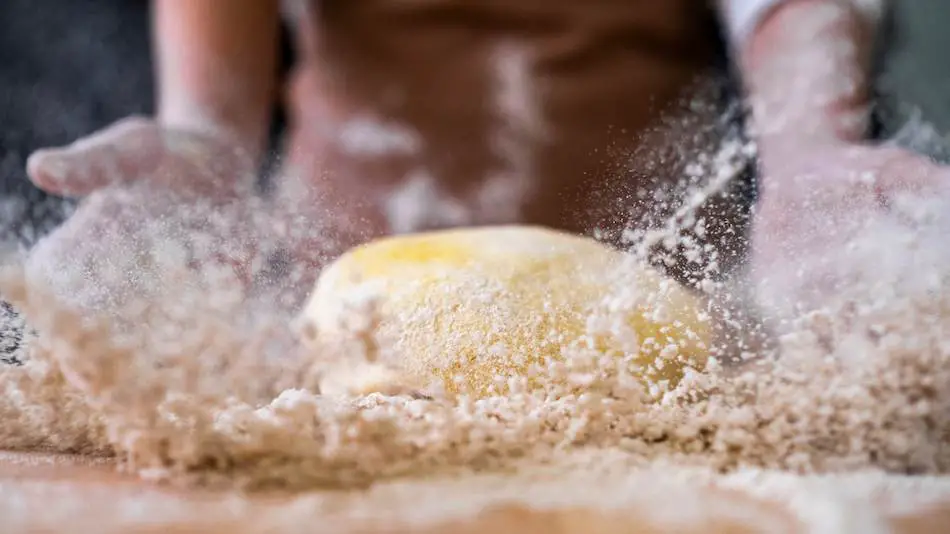
If you don’t use enough water when making sourdough bread, it can cause the dough to be dry and hard. This is because water is an essential ingredient in bread dough, and it plays a number of important roles. It helps to hydrate the flour and activate the gluten, which gives the dough its structure and allows it to rise properly.
Also, water helps to create the proper consistency in the dough and makes it easier to work with. Without enough water, the dough can be dry and difficult to handle, and it can be difficult for the yeast to produce enough carbon dioxide gas to leaven the bread. As a result, the bread will be dense and hard, and it may not have a well-developed flavor.
To avoid this problem, it’s important to measure the water carefully and to use the amount specified in the recipe. Additionally, you should pay attention to the texture of the dough and add more water if it seems too dry.
Solutions:
- Not using enough water can cause the dough to be dry and hard.
- Water is essential for hydrating the flour and activating the gluten, which gives the dough its structure and allows it to rise properly.
- Water also helps to create the proper consistency in the dough and makes it easier to work with.
- Without enough water, the dough can be dry and difficult to handle, and the bread will be dense and hard.
- To avoid this problem, measure the water carefully and use the amount specified in the recipe.
- Pay attention to the texture of the dough and add more water if it seems too dry.
Final Thoughts
Making sourdough bread can be a rewarding and delicious experience, but it can also be frustrating if your bread comes out hard and dense. Hopefully, after what we have explored, the potential reasons why this might happen and provided solutions and tips to avoid this problem in the future. I’m pretty sure I have covered all the possible causes and provided detailed explanations and advice to help you make perfect sourdough. By following these tips and using your newfound knowledge, I certainly hope you can avoid the pitfalls of baking bread.

